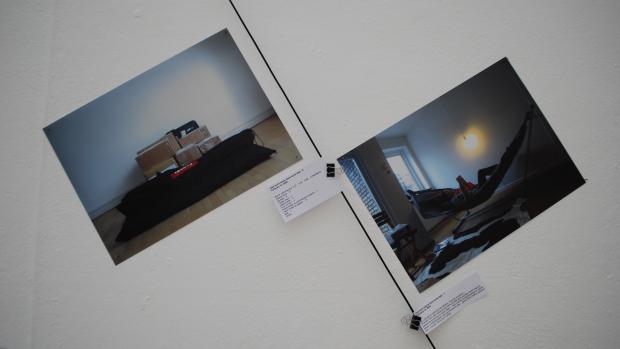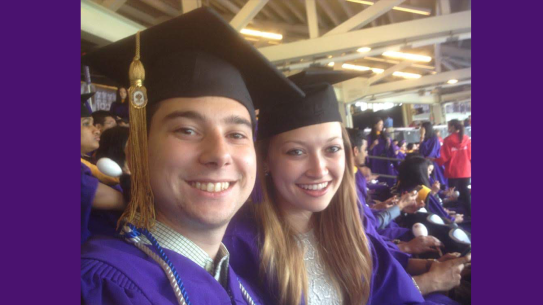Researching Multidisciplinary Research: Q&A With Professor Fayard

Studies show that when researchers from different disciplines get together, innovation follows. But that’s not always the case. Presenting an anthropologist, a computer scientist, and an electrical engineer with a challenge and giving them the resources (money, space, smart collaborators) to solve it won't ensure that they actually will. That doesn’t stop universities and industry from trying out various models of multidisciplinary research, though. But do any have higher success rates than others? And if the perfect model could be designed, what would it look like? To answer that question, Professor Anne-Laure Fayard of Polytechnic Institute of NYU’s Department of Technology Management, believes you have to understand the ways and whys researchers in different fields conduct their research.
[GALLERY:2698|left]To that end, she co-organized a workshop and exhibition with Bruce Tether, professor of design and innovation at Design London and Imperial College, on January 13 at the Royal College of Art (RCA) in London. Professor Fayard is spending a year as a visiting scholar at Design London, a joint venture between the RCA and Imperial College. Her overseas activities recall Building_Space_with_Words, the combined think-piece, research, and experimental art installation she collaborated on with Pratt professor Aileen Wilson and which debuted at NYU-Poly last spring. Professor Fayard’s most recent curatorial effort, titled Investigatio, featured works from academics, artists, and designers. She complemented it with a workshop on multidisciplinary research, inviting presenters from the Said Business School, IDEO, and Lancaster University, among others. (A full list of participants follows the Q&A.) NYU-Poly caught up with her to find out more.
Q: In what way do the ideas you’ve explored as part of the exhibit align or conflict with NYU-Poly’s i2e (invention, innovation, and entrepreneurship) philosophy? Put another way, the Institute has an ethos in which cross-discipline collaboration is highly valued. How does that ethos intersect with the topics you’re exploring?
A: It’s a complete overlap. If you look at the model of Design London and more generally of the Innovation and Entrepreneurship group at Imperial, it’s very close to Poly’s ethos. It’s a platform where people can really get projects together because design, by definition, is interdisciplinary. It sits at the intersection between arts and engineering. Moreover, as a process — lately referred to as “design thinking” or “design attitude” in the design world and in academia as a reflection on management as a kind of design — design is central to the understanding of complex problems and the development of innovative solutions.
Q: Last fall computer scientist Frances Allen spoke on campus and suggested that the most innovative work she’s seeing arises from those with interdisciplinary backgrounds, which your own academic history mirrors. In what ways did the workshop respond to Allen’s observation? Were the concerns raised limited to an academic context, or do you think cross-disciplinary research in a commercially driven or R&D setting enjoys a different reception?
A: All the research on innovation and creativity shows that new ideas come from different perspectives. All participants agreed on the importance of multidisciplinary work but also on its complexity. I think in academia multidisciplinary work might be more difficult to achieve than in R&D settings. In business, you know, there’s a purpose: you have to come up with a new product or innovation. So, in a way, people might be more willing to try different things. It doesn’t take away from the issue of managing people and team dynamics, but there’s a common driver. Academia is built around disciplines with specific methods, different perspectives on what is an “interesting” question and different outputs or productions — patents, books, journal articles, conference papers, objects presented in exhibition, etc.
Q: The workshop raised the provocative idea that researchers engaged in interdisciplinary work lose, rather than gain, credibility in their respective “home fields,” so to speak. If that’s the case, what do you think motivates them to continue along that path?
A: Internal motivation versus external motivation, I would say. Researchers who do interdisciplinary work are excited in developing deeper understandings and in engaging in a dialogue with other disciplines. Yet their colleagues and institutions often fail to acknowledge their work. There’s a tension there. Institutions would like people to be more innovative, more multidisciplinary, but they don’t give them the rewards and incentives that allow that. They should be more aware of the chasm between their encouragement — echoed by funding agencies and popular and business press articles — and the implications for researchers to get involved in that kind of work.
It’s very similar to companies encouraging knowledge-sharing but not realizing that the reward-and-incentive structure of their organization is completely focused on the individual and thus encourages individualistic, competitive behaviors, not sharing or collaborative behaviors.
Q: You’re saying that in an interdisciplinary or R&D environment you need people who are going to be able to look across disciplines or see across systems.
A: Yeah, there are a couple of studies showing that you have individuals who tend to be better at having flexible identities and being more loose about their disciplines, who are willing and ready to let go of their training and education. That kind of work is more exploratory but then the world is getting more complex. There are more and more interrelationships between different levels and different parts of society. It’s harder to tackle a program from just one perspective.
It doesn’t mean that you don’t need people who are very good experts at statistical analysis or modeling — I’m impressed by people who can do that; I can’t. But I think it’s the mix-and-match of those different perspectives that’s good.
Learn More
Watch: Exploring collaboration with DesignLondon, a ICBusiness School interview with Professor Fayard
Professor Fayard's Recent Work
Workshop: Multidisciplinary Research — Challenging and Rewarding or Too Damn Difficult?
Speakers
Marco Aurisicchio, Lecturer, Engineering Design, Imperial College
Simon Blyth, IDEO
Julien McHardy, Lancaster University
Peter Childs, Professor of Engineering Design, Imperial College
Lucy Kimbell, Clark Fellow in Design Leadership, Said Business School, Oxford University
Bruce Tether, Professor of Design and Innovation, Design London, Imperial College
Anthony Dunne, Professor and Head of Department, Design Interactions, Royal College of Art
Discussant
Jeremy Aynsley, Professor of History of Design, Royal College of Art
Organizers
Anne-Laure Fayard, Visiting Scholar, Design London, Imperial College and Assistant Professor of Management, Polytechnic Institute of NYU
Bruce Tether Professor of Design and Innovation, Design London, Imperial College
Exhibit: Investigatio
Yasmine Abbas, Architect
James Auger, Designer, Royal College of Art
Chiara Bello, Exhibition Designer
Anne-Laure Fayard, Visiting Scholar, Design London, Imperial College and Assistant Professor of Management, Polytechnic Institute of NYU
Lucy Kimbell, Clark Fellow in Design Leadership, Said Business School, Oxford University
Patrick Stacey, Research Associate, Imperial College Business School
Ileana Stigliani, Research Associate, Design London, Innovation and Entrepreneurship Group of Imperial College Business School
Aileen Wilson, Associate Professor of Art and Design Education, Pratt Institute
Nina Wakeford, Reader in Sociology, Goldsmiths, University of London




